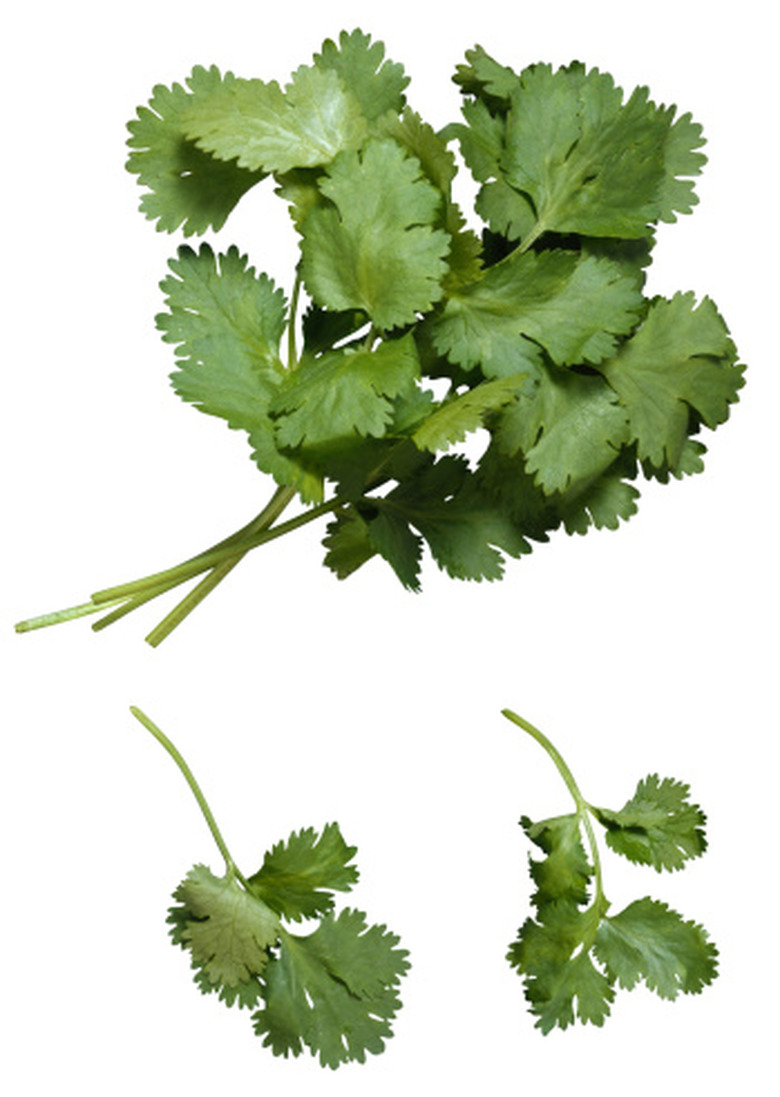Cilantro Vs. Culantro
Tropical and semitropical herbs are just making their way into the American diet. Two of these are cilantro and culantro. Cilantro is easily found in supermarkets and produce stands, while culantro is rarely seen and may only be found in areas with high Latin populations or in international markets. Both of them give a similar taste to food, and, in fact, culantro is called Mexican cilantro because of its resemblance to the flavor and aroma of that herb.
Cilantro
Cilantro is a soft-leaved herb with small, scalloped foliage. It has a fresh, grassy and citrusy flavor and aroma. There are a host of people who hate the herb, comparing the taste and smell to soap or lotion. The plant is used in many international cuisines, from Thai to Mexican. Cilantro is best used fresh and loses much of its flavor when dried. It is easy to grow, provided you have a full-sun location, well-drained soil and warm but not hot temperatures. Cilantro dies back in cold temperatures.
- Tropical and semitropical herbs are just making their way into the American diet.
- Cilantro is easily found in supermarkets and produce stands, while culantro is rarely seen and may only be found in areas with high Latin populations or in international markets.
Culantro
Culantro is a biennial herb native to tropical regions of the Americas and the West Indies. It is sometimes called spiny or serrated coriander, and is often confused with cilantro. Unlike cilantro, culantro grows in shady locations where soils are moist. The odor is said to be similar to that of a crushed bedbug, and it is a common part of herbal medicines. The leaves are used in food and are long, thick and serrated. It is a low-growing plant with leaves that emanate from a central radiant point. Both cilantro and culantro are closely related to the carrot family. Culantro produces a spiky flower, while cilantro produces airy white umbels.
- Culantro is a biennial herb native to tropical regions of the Americas and the West Indies.
- It is sometimes called spiny or serrated coriander, and is often confused with cilantro.
Uses
Cilantro is often added to spicy Latin or Thai dishes for the citrus notes that help complement these foods. Culantro is added to heavy foods such as meats, sauces and chutneys. It is almost always used cooked, while cilantro is often used fresh or added at the end of the cooking process to retain its delicate flavor. The leaves of each plant can be used interchangeably, but culantro has a more pungent aroma and flavor. Culantro is the basis of sofrito, a blend of herbs and seasonings that forms one of the most important flavors of Puerto Rican cuisine. Culantro is an ingredient in stomach medicines and is used to treat flu, pneumonia and malaria, among other ailments.
Coriander
Cilantro produces the herb coriander. Coriander is just the seed of the plant, and it can be harvested after the cilantro plant is allowed to flower. Coriander looks like a small peppercorn and is ground for use. It has none of the citrus flavor of cilantro, although the smell is similar. Coriander is excellent toasted and then ground, which brings out a rich spicy flavor. Culantro doesn't produce an edible seed, which is another element that sets it apart from cilantro. Both plants bolt and produce flowers when conditions are hot and dry.
- Cilantro is often added to spicy Latin or Thai dishes for the citrus notes that help complement these foods.
- The leaves of each plant can be used interchangeably, but culantro has a more pungent aroma and flavor.
